For most publishers, the big Gen Con pushes come out for the huge games, the titles that will cost you $60, $100, $150 bucks, contain a billion pieces, and weigh more than the Uber you took to get to the convention. But Leder Games is not that sort of publisher.
Instead, this year their work was devoted to Ahoy, the (comparatively) humble game of piracy by Greg Loring-Albright released in 2023 with a direct to retail release. I’ve been an Ahoy defender since it came out even as it gets easily forgotten among the broader hysteria around mega-hit Root and some of their other bigger box titles. So this year seeing them Leder most of their room to the two new Ahoy expansions, Renegades & Rivals and Fangs & Fortune, as well as turning the annual Gen Con balloon sculpture into a pitched battle between the four factions (see above), felt like vindication.
Nick Brachmann, Senior Developer at Leder and the main designer of the two expansions, spent most of the weekend in the Leder convention room introducing the new expansions and Ahoy itself to busy crowds. I was able to squirrel away a bit of his time in between games to get an inside look at the newest nautical factions, how you develop with a game as tight as Ahoy, and how the game’s big reception at the con has felt.
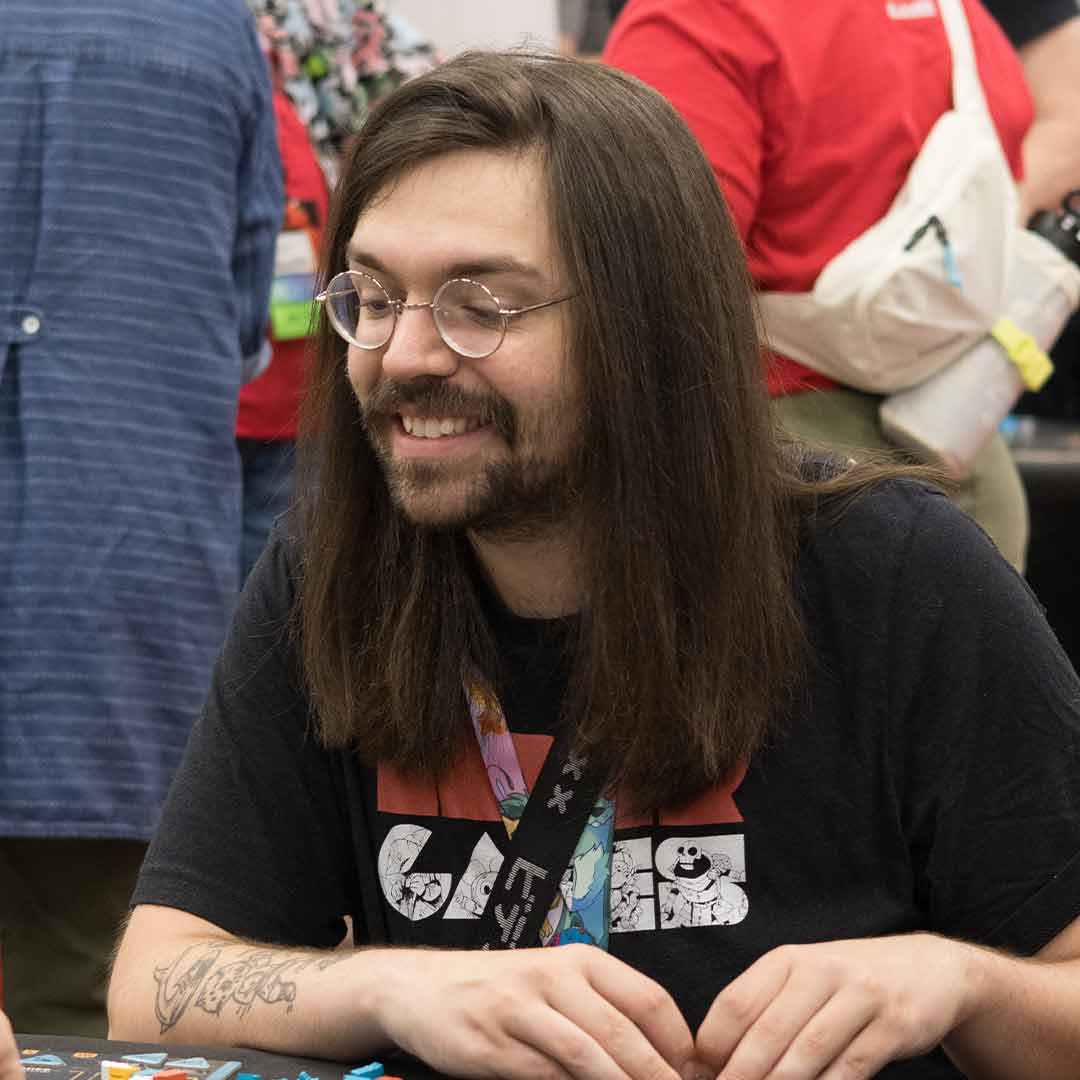
I want to talk start with the process for the new expansions coming out and how that happened. Ahoy came out and then there was a Kickstarter for New Horizons, right? And at the time we had, it was going be one thing and now it’s two things. So why the split?
Nick Brachmann: So New Horizons, we weren’t sure exactly, honestly, how the content was going to be built out. As we were working on it we didn’t know all the capabilities of the product. I often talk about the Team Mode, for an example. Team Mode came right at the end of development when I realized, because I’ve kept language so consistent between patrols, comrades, and stuff across the board, there’s no reason two blue players can’t share patrols and ride off of each other and same thing with comrades. New Horizons kind of existed mainly as a way to get excited about anything that could be about Ahoy.
When we run our campaigns of course we had a lot of the factions designed but some of those smaller products like the Treasure Pack we were still figuring out. At one point the Treasure Pack was going to be weather. I was convinced it was weather, I wanted weather systems and storms that would move around and stuff. But throughout the dev process stuff just keeps getting broken out more and more. And then when we looked at the product profile and the people that play Ahoy, there really are two types of Ahoy players. There’s people who love it as a two player game, and there’s people who play it at three and four players. We didn’t want to lock two player content behind a now $40 or $50 product. So now players who like two player have an expansion that they can justify that and get more content, as well now people who only play three and four player can get it kind of that way.
I know it’s a smaller sandbox compared to, say, Root. Ahoy is a little bit smaller scale and tighter design-wise. There’s a lot of constraints. How do you approach adding things and improving on what you already have?
In terms of like a strict job I think it was maybe one of my favorite ways to have had to handle a product because of the limitations. The game functions with controls and comrades in the game. The Bluefin Swuadron requires comrades to be in the game at some point to even have an opponent. So what does that mean? That means their ally has to do comrades. It’s vice versa for them. If comrades are only being compared to patrols, you have to do that. There’s only so many ways that you can approach this tight pool, to come up with, say, a new way to assign five dice in a round and output four to eight patrols. At some point you just can’t milk that much out of five dice and a thing, right? So it was a lot about finding new ways to triangulate the problem, which is why a lot of the new factions have a lot more tricksy approaches on how you have to do it. There’s a lot higher outputs if you can maximize it, but arriving at those is a bit harder. But yeah, it came down to the fact that the limitations of the product also informed so much of what had to be how it was.
Design can be really nebulous. You don’t know what you’re trying to make yet. As you’re working on it, your opinion of it changes slightly so you want to make it differently. But there’s parts of this that simply can’t change: the patrols, the comrades, the control, the way the regions roll up. As opposed to Root where you go to make a new faction, they can do anything in the game and score 30 points. There’s a million ways you can approach the problem. But when you’re trying to create content for Ahoy, there’s a reason there’s also a lot less spam content, I think. I think it’s just genuinely harder to generate. Because creating content that fits into that system without disrupting everything else, it’s a really difficult balance.
You’ve got two new factions coming in, the Blackfish Brigade and Shellfire Rebellion. What I find interesting about them is that they’re both twists on the existing factions. We’re going from shark to orcas and going from mollusks to shellfish. How did you come up with wanting to go with these guys and how did you approach those tweaks to make them really stand out individually?
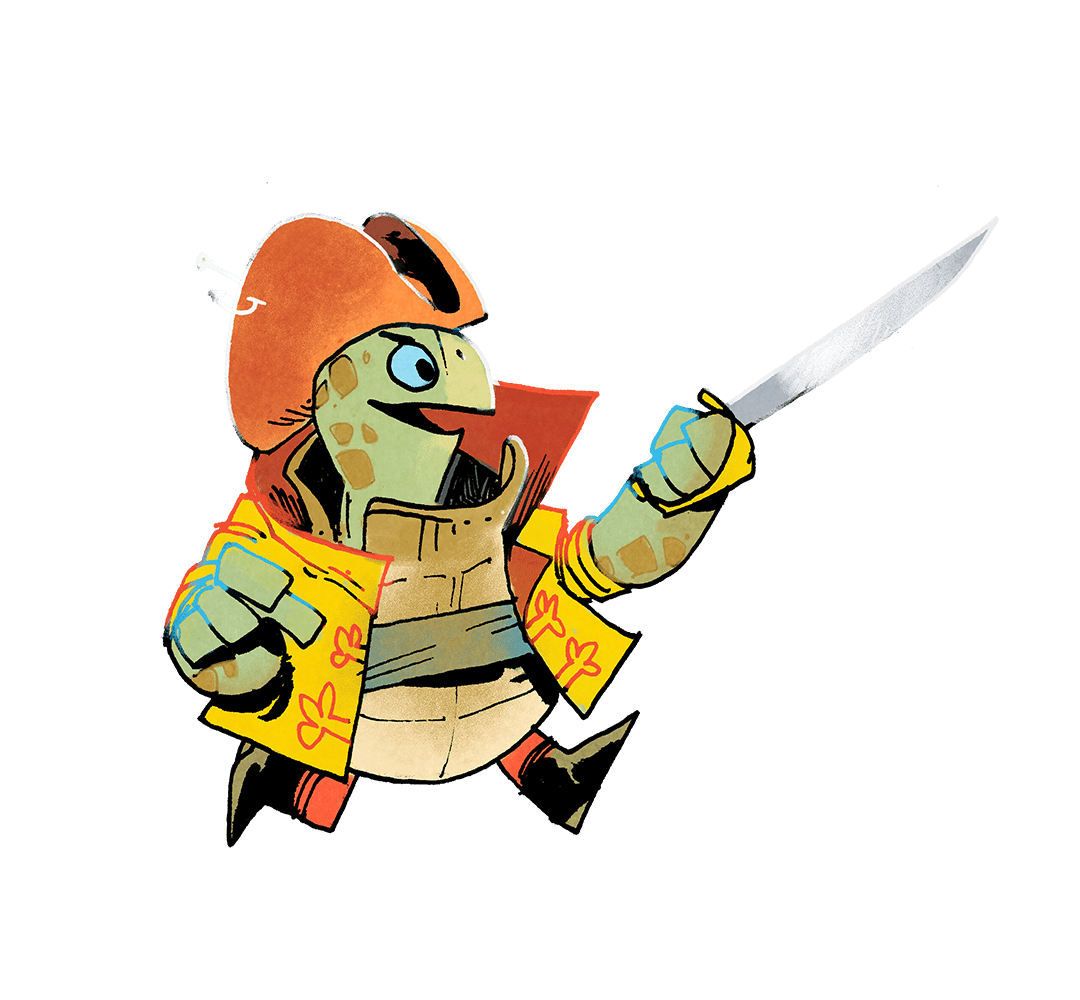
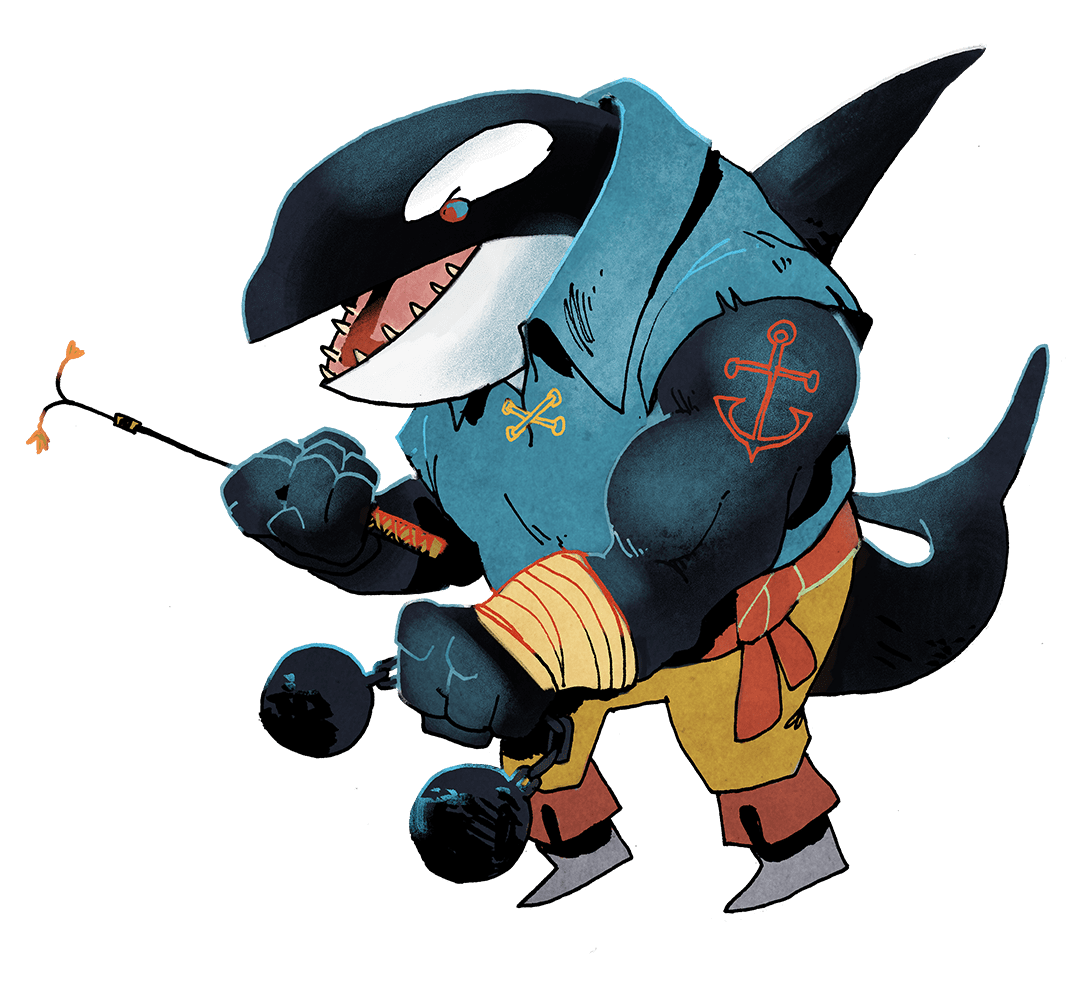
Nick: When I compare the Bluefin to the Blackfish, I think of the Bluefin as like a consistent metronome, like a hammer. Anytime they act they’re adding on stuff. They are like an impending force. Simply by acting you will add power to them. Well, perhaps somebody else is able to clear even more if they can come up with something better, like a more unique plan. That’s where that whole whale pod thing came in. I was trying to think of a unique way to deploy patrols to the map. There were various ones that went, at one point the whale pod existed on the edge of the map in the unexplored area. And when you moved it, you would move along edges counting how much you did and placing patrols kind of onto the edges of that map there. Because again, one of the huge differences in the base game is the Bluefin Squadron are really good at singular locations, obviously. They have a two-power flagship and they can dust everything where they are. Whereas the mollusks are incredibly good at going wide. The Blackfish now uniquely also have a wide strategy. If you build up your whale pod with multiple two veteran patrols in a single migrate, you can add six patrols, you can add six total control to the map across three different regions, which is more than an Inspired. It’s moments like that where I recognize that maybe I could create new relationships with each other.
I often talk about like a fighting game. In a good fighting game, your strategies are as informed by who your opponent is as they are by your own strategies. So when the Bluefin faction is playing against the mobs, it’s a different feeling of what I have to do versus when I go and get to the Shellfire. Like fighting a fireball character versus a grappler. I found that to be a really exciting part of the game where I feel like you get the nature of the matchups a lot more, especially now with the expansion content, but I feel like the relationships between the factions is really diverse.
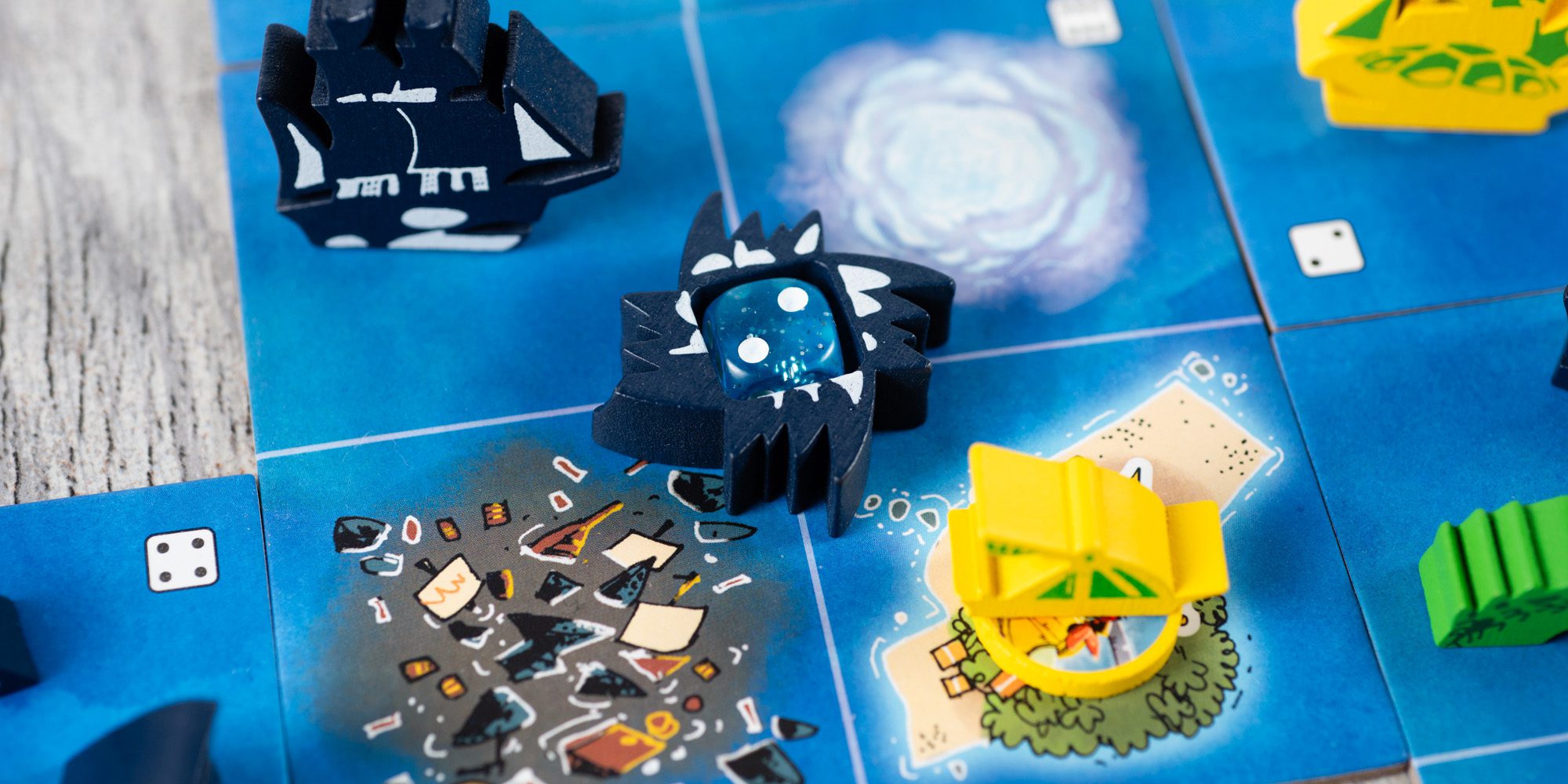
There’s two new factions that are twisting on that, but then we have the other expansion that adds in the Leviathan and the Coral Cap pirates.
Nick: Our big sea monster.
So what was the process for adding in these new complications to the game?
Nick: The Leviathan genuinely came from a place of “If I’m adding anything, I get to add anything I want to the world of Ahoy!…there needs to be a sea monster.” That one actually did start with the thematic creature pitch. I like orcas, I like turtles, but it wasn’t the reason I made the yellow faction The Shellfire because I wanted turtles in the game specifically. But then I got the idea of the head that’s moving around with these little arched body pieces. And it honestly was a little bit product forward too where you this head and little wood pieces arch out the water back down. The from there it turned into asking what would a big Leviathan do? What does he care about? And in a great way, it also came from that limitation stuff. A Leviathan’s not gonna have crew. He’s not gonna have people manning to him. How am going to be increasing the region values?
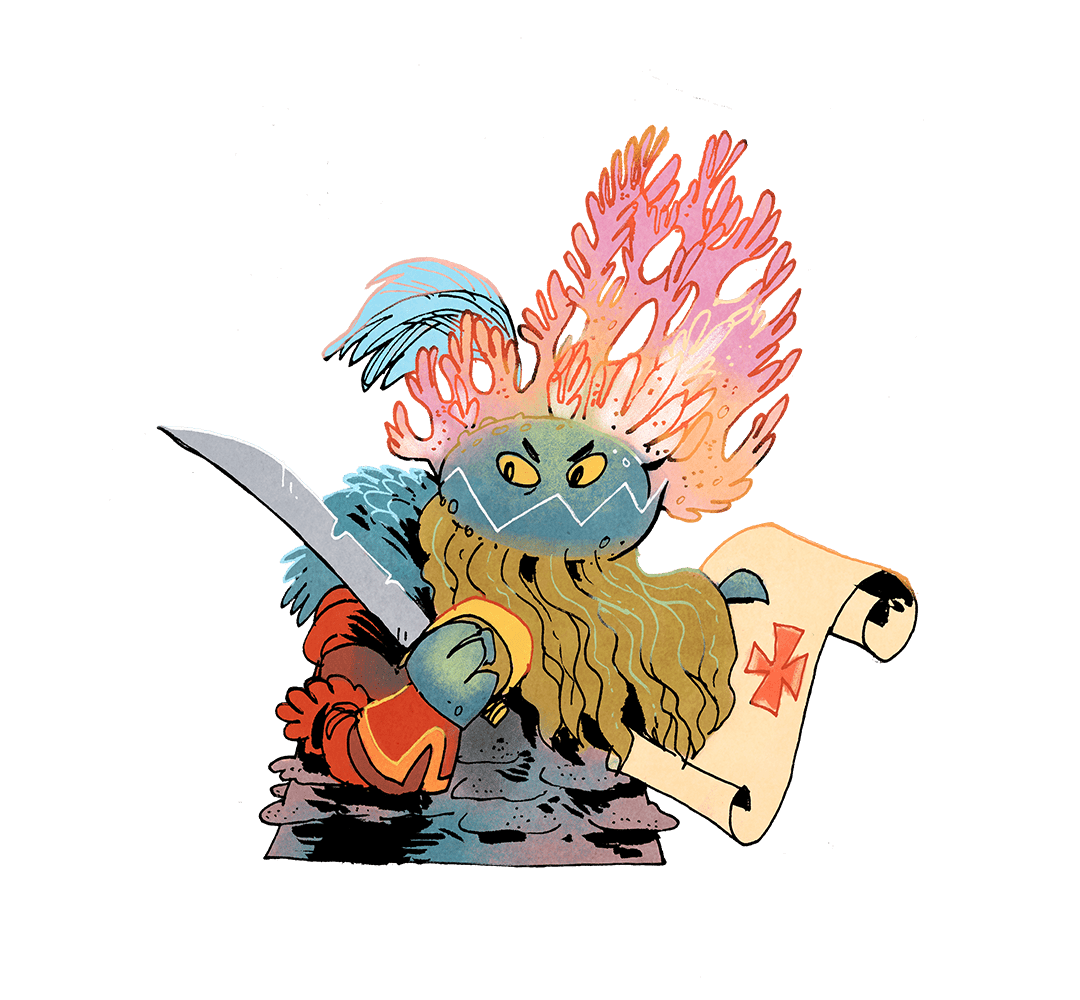
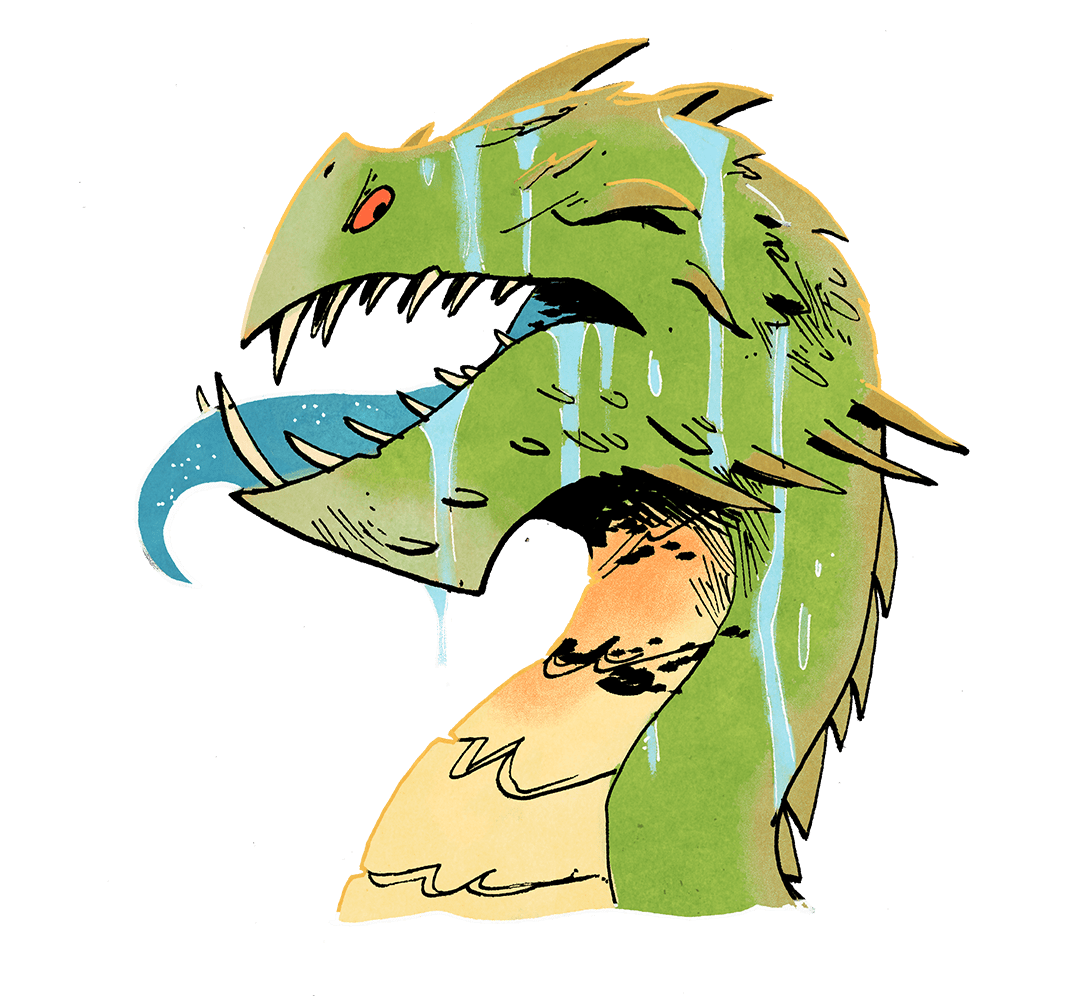
Thematically, I really liked how the Leviathan at one point in the game would essentially create a floating bonus point for any region they were in. So if you were controlling a region that was worth one point but there also was a Leviathan body piece there, it actually was worth two points. I liked that because this region’s infamous right now, there’s a snake around controlling it. But those kind of weird virtual currencies where it’s not actually represented on the dice just became such a headache that I needed to find a way to make them manually do it.
And how did the Coral Cap Pirates come together?
Nick : For a long time there was a completely different version of what the Coral Cap were. At one point they were called the Swindler and they would drop off pearls and ammo in the water. When players picked up pearls that were two gold, then I would get some points. When they picked up ammo, it would load their cannons, and I would get some points. So it was trying to be a kind cool middleman faction. Maybe like the Otters or something, putting pearls over here because I want this person to help. These types of factions are incredibly hard to design, as we’ve learned. The actions that intersect that play as a mediator are such a fine line you need to be on. But I really liked what it was doing. And then at one point pivoted to, it was essentially like a cruise ship. It was a cruise ship magnate thing, which I understand thematically maybe would have made little sense in a point but I really like this idea of a big yacht that people would relax on.
That’s one of my favorite bits in Muppet Treasure Island is the rats on the cruise ship.
Nick: They’re doing the cruise stuff as the pirate starts happening. love that. You’re right, maybe that’s even where came from! Because they would set up resorts on islands and then when people would visit the resorts they could gain bonuses and things. What I found was they weren’t engaging enough with the systems of the game itself, they were trying to engage with the players only. That was when I realized you need people to engage with the puzzle of both the map and the crew, because that’s where a lot of the game is. I think it’s really understated how much Ahoy! is about the map. You can hang yourself on poor map construction or devastate an opponent if you can beat them out in a proper construction.
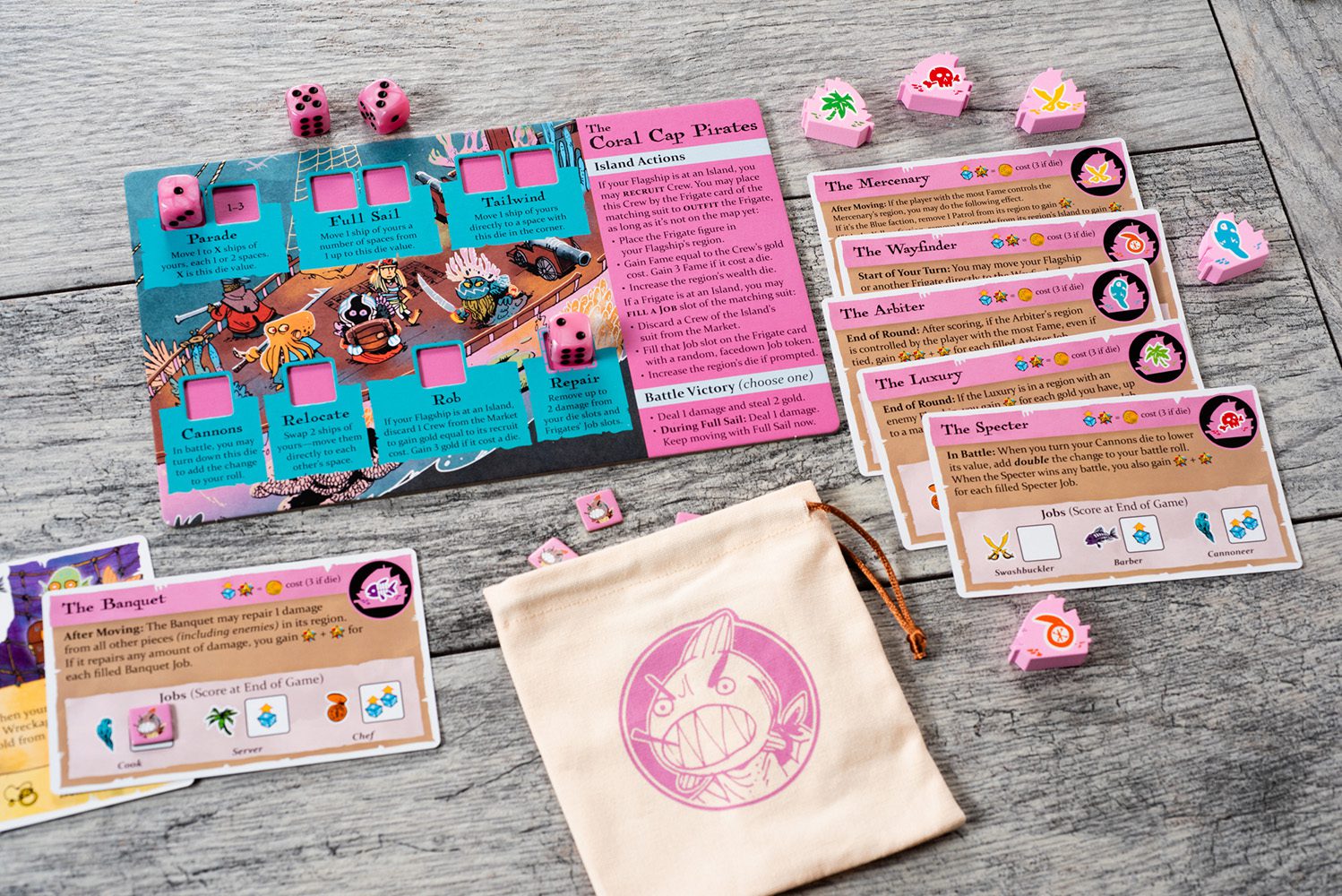
My favorite part about the Coral Caps is the choice between getting a lot of frigates on the map or getting a few frigates that are very powerful. I think it was another part of the faction that I found a lot of joy in later in the design where I was like, there’s certain builds where you can fill out one boat, get it stacked with crew, and then that almost becomes your hero vessel moving around, fighting stuff, scoring points. So the idea of this ever-growing fleet. I was inspired obviously by stuff like One Piece and the Straw Hat crew and stuff like that. That was where I wanted to be. You are just one person, but if you’re charming and you’ve got money you can get pretty far in this world. It’s kind of a gimmick at the end of it.
Are there any surprises or anything with how people are playing it that has been not what you expected, or stuff people are really positive about?
Nick: People love the turtles being thrown through the air. I’ve seen it over and over again and old people just think it’s hilarious. It’s very Mario. And I love hearing stuff like that because other people remind you honestly more about your tastes and stuff than you even remember. I’ve played so much Nintendo growing up and all these things do come through in people’s art, all their inspirations.
But my favorite part of the con, because a lot of these people hadn’t played Ahoy before, and we’re throwing them into the more complicated factions like we talked about. I’ve loved walking over to somebody’s board and they are in a terrible position as the Leviathan, and they ask, “How can I get out of this?” And I now have this fun goal, right, to be like, okay, okay, I need to save you somehow. How can I get you back out of here? Yeah.
In the Ahoy expansions, you have to work for everything. Nothing comes free to you, it’s all planned. And I think the reason we wanted to expand it and add more stuff was because that’s the stuff our audience likes. They like crunchy games. Nobody here’s afraid of rules. They trust us as a design team and a studio that we’ll put in the effort here when you find a weird edge or you’re crunching in a corner, there’s a way to get out of it. That really delights people, knowing that there’s something there that I just haven’t found yet.
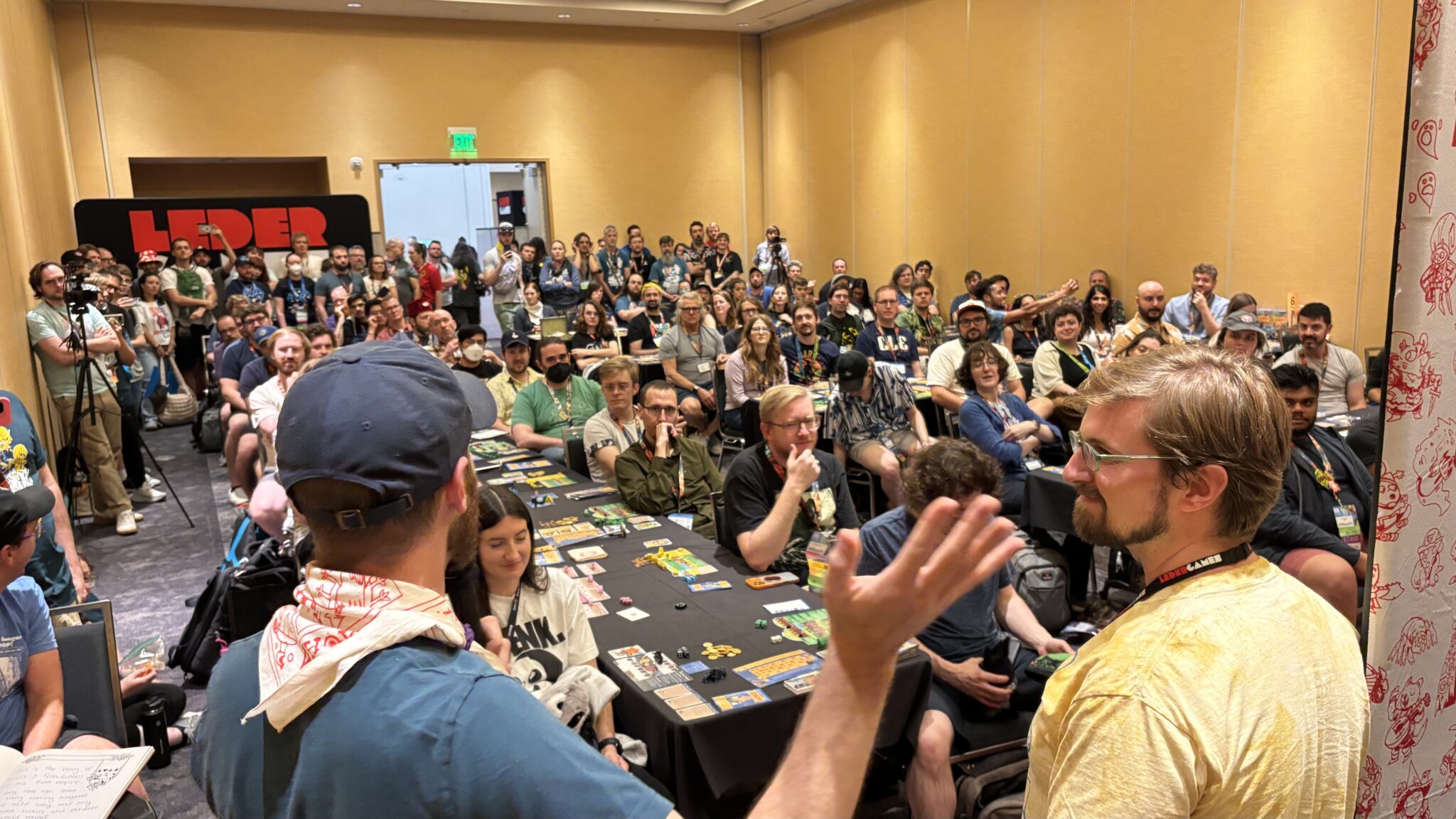
Ahoy: Rivals & Renegades and Ahoy: Fang & Fortune new expansions are set for release this month, each at an MSRP of $25.00. More info can be found at the Leder Games website.
Images via Leder Games
Have strong thoughts about this piece you need to share? Or maybe there’s something else on your mind you’re wanting to talk about with fellow Fandomentals? Head on over to our Community server to join in the conversation!

